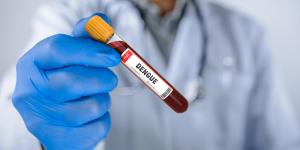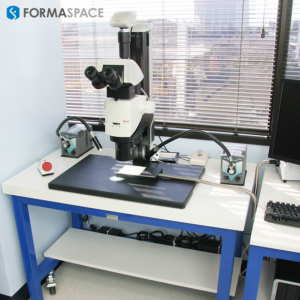
Increasing Risk of Dengue Fever in the USA
Find out more about how to diagnose the disease in the laboratory, and current developments to create a viable vaccine to prevent its spread.
In June 2024, the CDC issued a Health Alert Network (HAN) Health Advisory that the dengue virus (DENV) – which causes the disease known as dengue fever – poses an increased threat in the United States.
Dengue fever, also commonly known as “Breakbone Disease” in Latin America, is a mosquito-borne disease that causes a range of symptoms, including joint pain, bone pain, muscle aches, pain behind the eyes, headache, nausea, vomiting, skin rash, and low white blood cell counts. Severe cases affecting about 5% of patients can lead to shock, severe bleeding, and respiratory distress.
According to the CDC, dengue fever cases worldwide are currently at an all-time high. In the Americas, nearly 10 million cases were reported in the first half of 2024, doubling the caseload in 2023. (Among the 4.6 million cases reported in 2023, there were 4,000 fatalities from the disease.)
Among the US territories, Puerto Rico has been especially hard hit. The Puerto Rican commonwealth declared a public health emergency after nearly 1,500 cases were diagnosed through June 2024. US travelers are also at risk, with about 750 cases detected.
Current Research in the Disease Pathology of Dengue Fever
What causes dengue fever?
According to the CDC, dengue fever is the most common of the arboviral diseases, e.g. those spread by insect bites.
Individual dengue fever cases are caused by one of four closely related dengue virus serotypes (e.g. variants) in the Flaviviridae family, which include the West Nile virus. The four dengue virus serotypes are named DENV-1, DENV-2, DENV-3, and DENV-4.
Patients recovering from one of these four virus variants are generally conferred with lifelong immunity to that one variant but only receive limited protection (estimated at 6 months) against the other three virus variants.
In other words, patients can acquire dengue fever disease multiple times (from different variants of the virus) throughout their lifetime.
Fortunately, dengue fever is not communicable between human patients; human infection requires mosquito transmission.
Clinical Testing Lab Protocols for Dengue Fever Disease Detection
Because patients can acquire dengue fever multiple times, clinical testing protocols for dengue fever need to take this into account. This means, for example, that a single IgG test showing a positive antibody test could be inconclusive – it could be indicative of a current dengue virus infection, but it might also be picking up antibodies from a previous dengue or a similar flavivirus infection, such as West Nile virus, which is now endemic in the US.
Therefore, the CDC’s recommended protocol for testing suspected recent infections (within the first 7 days of symptoms appearing) is to perform two tests on the patient’s serum (e.g. blood samples with the cellular components and clotting factors removed). The two-test combination helps healthcare providers surmise whether the tests are indicative of a current infection or one from the recent past.
· Test 1: Dengue Immunoglobulin (IgM) Antibody Test
The IgM serological test identifies initial antibodies produced by the body when exposed to a pathogen. In dengue fever, IgM levels can be detected starting 4-5 days after infection and can be detected for at least 12 subsequent weeks.
The IgM test, formally known as MAC-ELISA, short for IgM Antibody Capture Enzyme-Linked Immunosorbent Assay, places the patient’s serum sample on a microtiter followed by dengue virus antigens derived from the four variants (DENV 1-4).
Because this test could pick up a recent (but not current) dengue infection, clinicians need to confirm the results with one of the second tests listed below.
· Test 2 Option A: Nucleic Acid Amplification Test (NAAT)
The molecular Nucleic Acid Amplification Test (NAAT) uses an RT-PCR test setup to amplify, e.g. grow, the dengue virus RNA genetic code taken from a patient’s serum sample so that lab clinicians can identify the specific dengue virus serotype (variant).
· Test 2 Option B: NS1 Antigen Tests
The serological NS1 Antigen Test can detect the presence of residual dengue virus non-structural protein 1 (NS1) in the patient’s serum sample.
NS1 is a conserved non-structural glycoprotein secreted from infected human host cells. The NS1 amino acids are closely related (80%) to the four dengue virus serotypes.
The NS1 test can be ambiguous in that it might identify a recent past infection, so it needs to be confirmed with the Dengue Immunoglobulin (IgM) Antibody Test above.
Why is Dengue Fever Becoming an Increasing Threat to North America?
According to a paper published in Nature Microbiology, dengue fever has spread across the tropical world and now affects over half of the world’s population, causing an estimated 100 million symptomatic cases and 10,000 deaths annually.
Historically, dengue fever infections predominated in the so-called “dengue belt,” located 30 degrees north or south of the equator. In this region, temperatures rarely drop below 50F, even in winter.
Read more...
Julia Solodovnikova
Formaspace
+1 800-251-1505
email us here
Visit us on social media:
Facebook
X
LinkedIn
Distribution channels: Chemical Industry, Culture, Society & Lifestyle, Healthcare & Pharmaceuticals Industry, Science, World & Regional
Legal Disclaimer:
EIN Presswire provides this news content "as is" without warranty of any kind. We do not accept any responsibility or liability for the accuracy, content, images, videos, licenses, completeness, legality, or reliability of the information contained in this article. If you have any complaints or copyright issues related to this article, kindly contact the author above.
Submit your press release


